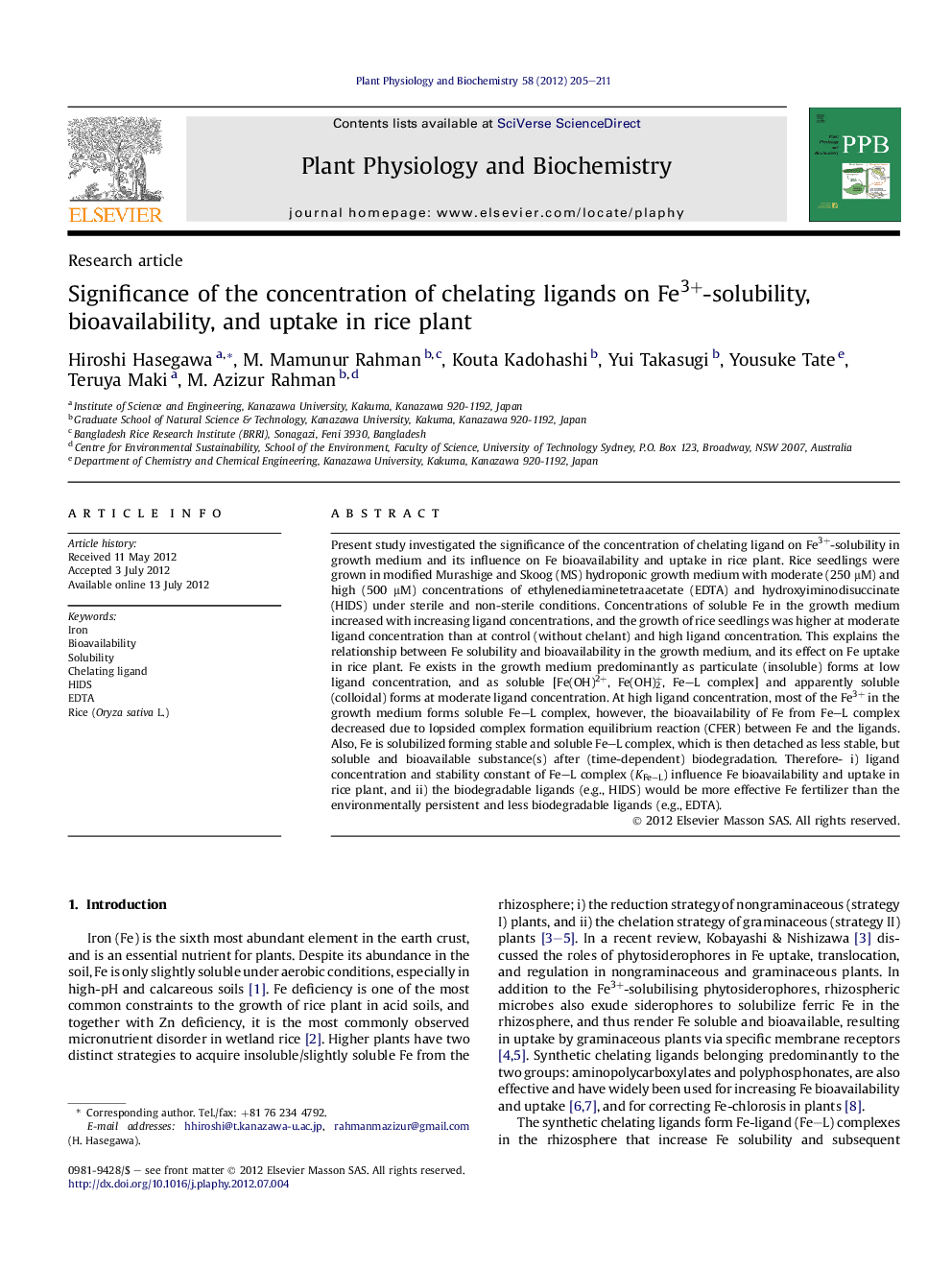| Article ID | Journal | Published Year | Pages | File Type |
|---|---|---|---|---|
| 2016175 | Plant Physiology and Biochemistry | 2012 | 7 Pages |
Present study investigated the significance of the concentration of chelating ligand on Fe3+-solubility in growth medium and its influence on Fe bioavailability and uptake in rice plant. Rice seedlings were grown in modified Murashige and Skoog (MS) hydroponic growth medium with moderate (250 μM) and high (500 μM) concentrations of ethylenediaminetetraacetate (EDTA) and hydroxyiminodisuccinate (HIDS) under sterile and non-sterile conditions. Concentrations of soluble Fe in the growth medium increased with increasing ligand concentrations, and the growth of rice seedlings was higher at moderate ligand concentration than at control (without chelant) and high ligand concentration. This explains the relationship between Fe solubility and bioavailability in the growth medium, and its effect on Fe uptake in rice plant. Fe exists in the growth medium predominantly as particulate (insoluble) forms at low ligand concentration, and as soluble [Fe(OH)2+, Fe(OH)2+, Fe–L complex] and apparently soluble (colloidal) forms at moderate ligand concentration. At high ligand concentration, most of the Fe3+ in the growth medium forms soluble Fe–L complex, however, the bioavailability of Fe from Fe–L complex decreased due to lopsided complex formation equilibrium reaction (CFER) between Fe and the ligands. Also, Fe is solubilized forming stable and soluble Fe–L complex, which is then detached as less stable, but soluble and bioavailable substance(s) after (time-dependent) biodegradation. Therefore- i) ligand concentration and stability constant of Fe–L complex (KFe–L) influence Fe bioavailability and uptake in rice plant, and ii) the biodegradable ligands (e.g., HIDS) would be more effective Fe fertilizer than the environmentally persistent and less biodegradable ligands (e.g., EDTA).
Graphical abstractFigure optionsDownload full-size imageDownload as PowerPoint slideHighlights► Lignad concentration in growth medium influences Fe solubility and bioavailability to rice plant. ► Stability constant of Fe–L complex is an important factor for Fe bioavailability in rice plant. ► Bioavailability and uptake of Fe from Fe–L complex in rice plant is low at high ligand concentration. ► Biodegradable HIDS would be an alternative Fe fertilizer to non-biodegradable EDTA for rice.
